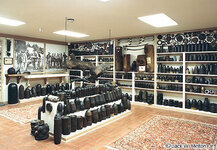maxxkatt
Forum Supporter
The reason I ask is I talked to some older detectorists who hunted in that time period the Atlanta parks that were in civil war battle or camp areas. They said it was common to find lots of 3 ringers and other CW relics. They were saying they would find 20-30 CW bullets per hunt.
I can see that happening for three reasons. One the introduction of a really good metal detector, the growth of the hobby back then and the lesser amounts of metallic trash in the parks compared to what we have now 40 years later.
I am thinking it was some model of the white's detector line that was cleaning up these parks. But I cannot remember what the old guys told me 10 years ago in terms of the type of detector they used. No real reason for this post other than I am just curious because I know even in the past 6 years with my 800, CTX or XP2 those parks give up little CW treasures or old coins.
I can see that happening for three reasons. One the introduction of a really good metal detector, the growth of the hobby back then and the lesser amounts of metallic trash in the parks compared to what we have now 40 years later.
I am thinking it was some model of the white's detector line that was cleaning up these parks. But I cannot remember what the old guys told me 10 years ago in terms of the type of detector they used. No real reason for this post other than I am just curious because I know even in the past 6 years with my 800, CTX or XP2 those parks give up little CW treasures or old coins.


